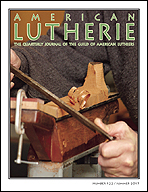 |
|
||||
 |
Letters from our readers Glen Friesen and his Canadian school kids are still at it. They've had their ups and downs, but his program to have tenth-grade students build guitars in the public school is going strong, with a big renovated shop and an enthusiastic bunch of pupils. |
||||
 |
Let's Catch Up with Nick and Jeanne Kukich by Cyndy Burton and Jeffrey Elliott We interviewed Nick Kukich, maker of Franklin guitars, in 1994. Since then he has made a ton of his prized OM-style flattops and married his long-time lutherie helper and significant other, Jeanne. Authors Burton and Elliott have known them since before dirt was invented, so they have some fun bringing us up to date. |
||||
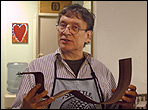 |
Building a Franklin Guitar by Nick Kukich and Cyndy Burton Nick has always done lutherie his own way. Here's over seventy photos of the process along with succinct commentary. Even if you are an experienced maker of steel string guitars, I'll bet you find a couple surprises. |
||||
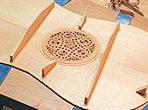 |
Antonio Stradivari, Guitar Maker by Jan van Cappelle Just a fiddle maker? Fugidaboutit! Our boy Tony Strad was a guitar maker, for sure. Author van Cappelle surveys the existing instruments and the many forms, tools, and patterns in museums to draw some conclusions about Stradivari's methods and intentions. Then he builds a pair of replicas while we watch over his shoulder. He even makes authentic cases for them. |
||||
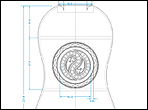 |
Baroque Guitar based on Stradivari form MM.E.901.6 GAL Instrument Plan #70 This is just the cutest thing! It's a Baroque guitar, the size of a soprano ukulele, with all the frilly details one sees in the master's full-sized instruments. Stradivari built on inside forms, many of which exist in museum collections. This design is built on a replica of a tiny guitar form, preserved in the Cite de la Musique in Paris. |
||||
 |
Meet the Maker: Evan Gluck
by Linda Stuckey If you attended the last couple of GAL Conventions, you will remember Evan Gluck. We all know he's a guitar repair guy in NYC. But in this interview we learn some very interesting non-lutherie things about him, like that he was raised by a film director, and then married a film director. Are you old enough to remember cats singing "meow, meow, meow, meow" on TV? Evan's dad shot that. (Look for it on Youtube: meow mix tv commercial.) |
||||
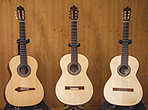 |
Tres Hermanas
by Juan Oscar Azaret OK, let's get real. Lots of different bracing schemes have made lots of fine-sounding classical guitars. How much difference does the pattern really make? Author Azaret goes all-in to answer this question. He built three guitars as similar as he could make them, with matched woods and the whole shebang. He braced the tops using Kasha, Fleta, and Romanillos patterns. Then he subjected the "Three Sisters" to an impressive battery of tests designed to give hard data by which to compare them. So, what do you think he learned? Here's a chance to test your assumptions and prejudices. |
||||
 |
Contemporary Ukulele Making: How I Construct Ukulele Tops from his 2014 GAL Convention workshop by Bob Gleason Bob is a very direct guy in his personal manner and in his lutherie work. He calls his approach “subjective;” he does what works and what feels right. But lately he has taken to also measuring the results, so that he can communicate more objectively with other makers. Here he braces a uke top and carves down the bars until the flexibility is right. |
||||
| Reviews by Peggy Stuart It finally happened. A professor at a major university wrote a book about the American Lutherie Boom. No, it was not a Music professor. Not an Art professor. History? Business Administration? Nope. The book is "Guitar Makers: The Endurance of Artisanal Values in North America" by Kathryn Dudley, professor of Anthropology at Yale University. And just as the academicians need Dudley's pioneering work to understand the odd ways of American luthiers, we have tapped Peggy Stuart to be our own spirit guide into the mysterious encampment of the academicians. Peggy is a long-time luthier who has retired from decades as a university librarian. A fascinating review of an important book. |
|||||
| Questions edited by R.M. Mottola Why are in-cannel carving gouges so rare? Where can I get thick hunks of bone? Plus more discussion of the term "chocolatey" as a descriptor of guitar tone than you thought you would ever see. |
|||||
Web Extras |
|||||
